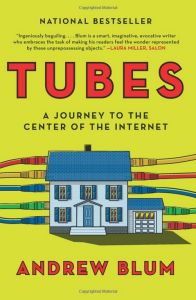Join getAbstract to access the summary!

Join getAbstract to access the summary!
Andrew Blum
Tubes
A Journey to the Center of the Internet
Ecco, 2013
What's inside?
Your Internet cable plugs into your wall. Then where does it go?
Recommendation
Andrew Blum adopts a strong, authoritative voice in this broad and complex exploration of the physical makeup of the Internet. Readers who prefer visual representations may find themselves impatient with Blum’s exploratory approach, though his prose is lovely and leavened with dry humor. But others will find the book lively, strange and fascinating. getAbstract recommends Blum’s insights to scholars of cyberculture and modern society, historians of technology, innovators, and the intellectually curious in every field.
Summary
About the Author
Andrew Blum, a contributing editor for Metropolis, writes about technology and architecture for publications including Wired, The New Yorker and Popular Science.


















Comment on this summary